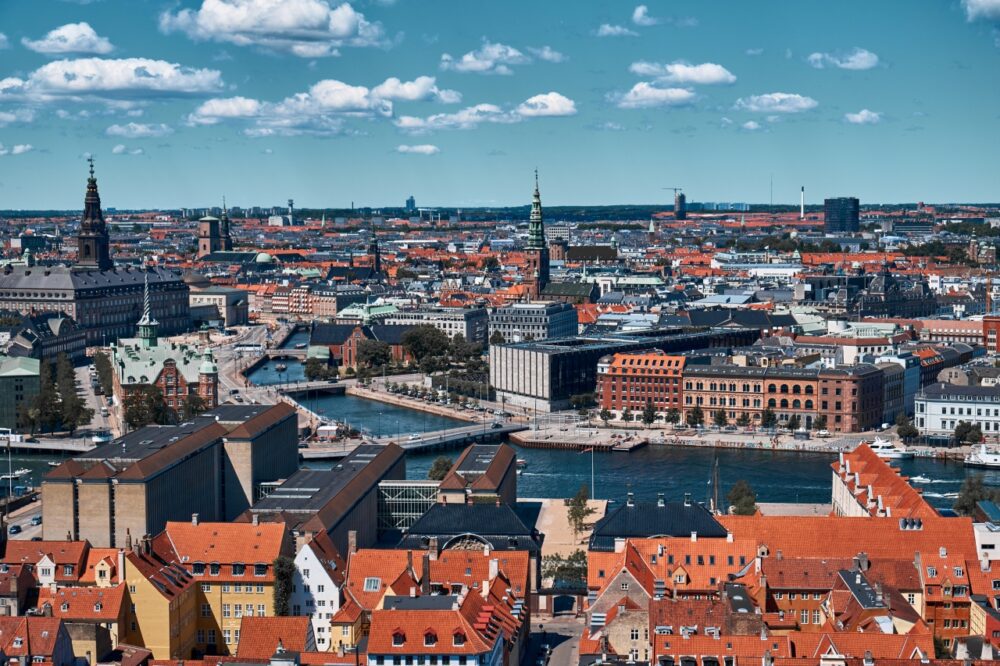
Is Copenhagen worth visiting? Without a doubt! When I first arrived in Denmark’s capital, I was instantly charmed by its blend of old-world elegance and modern Scandinavian cool. From cycling along the colourful streets of Nyhavn to indulging in a flaky Danish pastry at a cosy café, Copenhagen felt like a city that knows how to live well.
Nestled on the shores of the Baltic Sea, Copenhagen is a city where history, design, and sustainability meet. Famous for its picturesque harbour, innovative architecture, and a food scene that’s second to none, Copenhagen offers a little bit of everything. Whether you’re exploring the Tivoli Gardens, marvelling at the Little Mermaid statue, or enjoying a Michelin-starred meal, the city has something for every type of traveller. But is Copenhagen worth visiting for you?
In this blog post, we’ll dive into the top 10 reasons why Copenhagen should be on your travel list, from its rich history to its vibrant cultural scene. We’ll also share travel tips and advice to help you plan the perfect trip. Keep reading, and you’ll discover why this Danish gem is a must-visit destination.
Table of Contents
Pros – Reasons You Should Visit Copenhagen
1. A Beautiful and Walkable City with a Fairytale Atmosphere
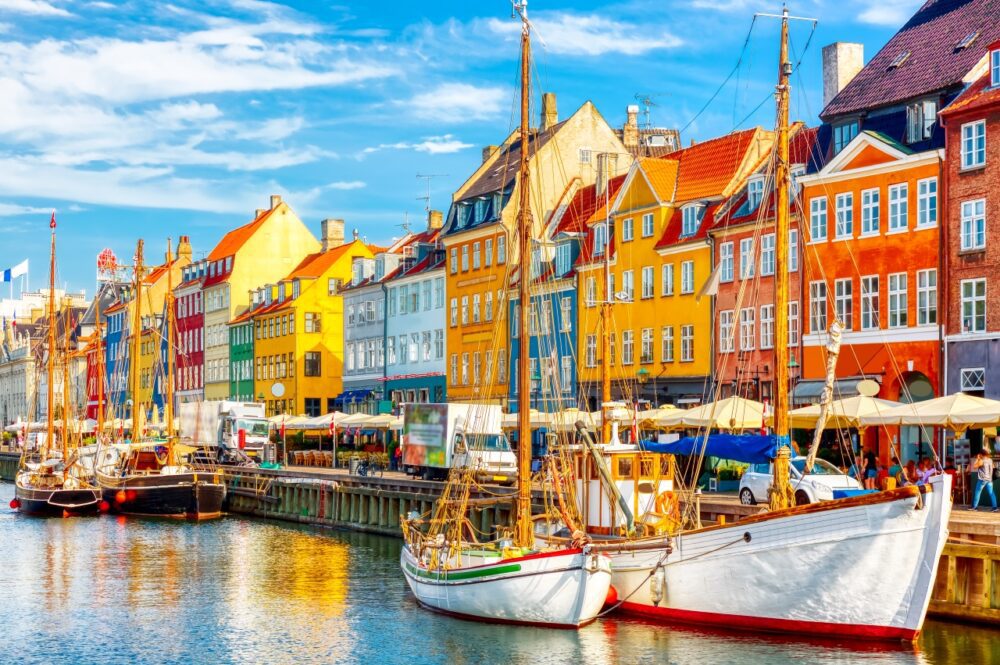
Copenhagen is one of Europe’s most picturesque capitals, with colourful waterfront buildings, charming cobblestone streets, and historic landmarks that give the city a magical feel. The city’s architecture is a perfect mix of old and new, where medieval castles and Renaissance palaces sit alongside sleek, modern design. Despite being a capital city, Copenhagen feels intimate, and its compact size makes it easy to explore on foot or by bike.
I started my visit in Nyhavn, the city’s most iconic waterfront district, where the brightly painted townhouses and wooden sailing ships created a postcard-perfect scene. As I wandered through the historic streets, I stumbled upon hidden courtyards, grand royal residences, and canals lined with cosy cafés. Unlike larger capitals where getting around feels exhausting, Copenhagen’s small-scale charm makes it one of the most enjoyable cities to explore on foot.
2. One of the Best Cycling Cities in the World
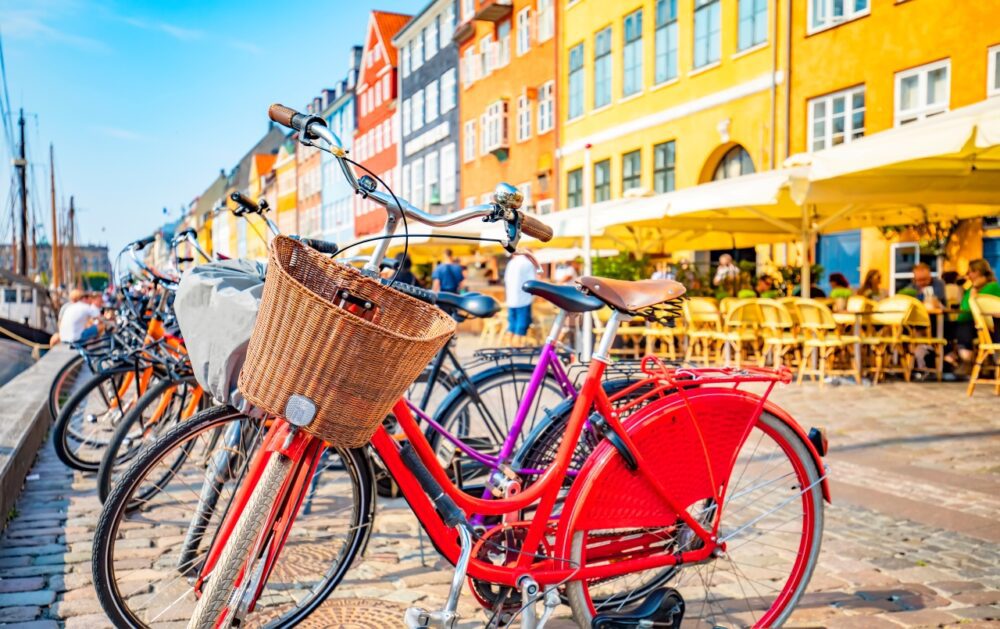
Copenhagen is often ranked as one of the most bike-friendly cities in the world, with dedicated cycling lanes, bike-friendly traffic signals, and a culture that encourages two-wheeled transport. Renting a bike is one of the best ways to experience the city like a local, as most attractions are easily accessible by cycling, and the flat terrain makes it easy for riders of all levels.
I rented a bike and within minutes felt like I was part of the city’s daily rhythm. Riding through the streets felt safe and stress-free, thanks to the well-maintained cycling infrastructure. I even joined the morning commute rush, cycling alongside locals heading to work in their stylish coats and scarves. If you want to blend in with Copenhageners and experience the city like a true local, biking is the way to go.
3. A Strong Focus on Sustainability and Green Living
Copenhagen is one of the most environmentally conscious cities in the world, with a strong commitment to sustainability. The city aims to become carbon-neutral by 2025, and this green mindset is evident in everything from its efficient public transport system to its emphasis on organic food and eco-friendly hotels. The city also has plenty of green spaces, with parks, gardens, and even urban swimming areas where locals take dips in the clean harbour waters.
I was amazed by how seamlessly sustainability is woven into everyday life in Copenhagen. From the electric buses to the city’s love for farm-to-table dining, it felt like a place where living sustainably isn’t just a trend but a way of life. Seeing people swim in the harbour at Islands Brygge was a testament to how clean and well-maintained the city is. If you appreciate green living and environmentally friendly cities, Copenhagen is leading the way.
4. Stunning Castles and Royal Palaces
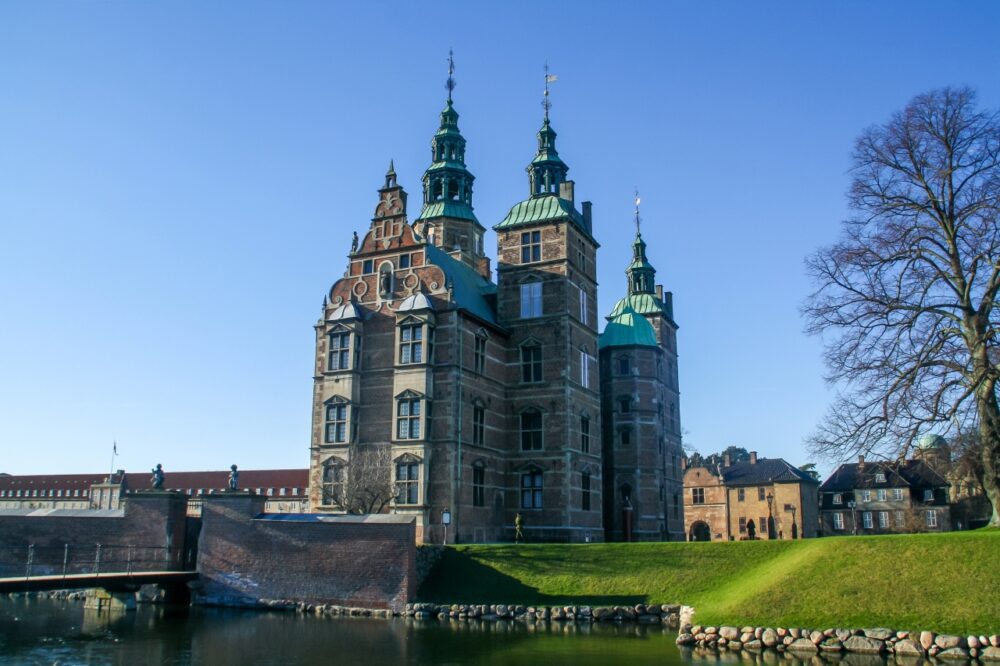
Denmark has a rich royal history, and Copenhagen is home to some of the most beautiful castles and palaces in Scandinavia. Amalienborg Palace, the official residence of the Danish royal family, is a must-visit, especially if you catch the daily changing of the guard ceremony. Rosenborg Castle, with its lavish interiors and crown jewels, offers a glimpse into Denmark’s royal past, while Christiansborg Palace serves as both a government building and a historic landmark.
I took a guided tour of Rosenborg Castle and was fascinated by the intricate details of the rooms, from the tapestries lining the walls to the dazzling royal crown on display. Walking through the gardens outside felt like stepping into a fairytale. If you love history, Copenhagen’s royal landmarks add a regal charm to the city.
5. A Food Scene That Ranges from Michelin Stars to Street Food
Copenhagen is a dream destination for food lovers, offering everything from Michelin-starred fine dining to casual street food markets. The city is home to Noma, one of the world’s most famous restaurants, but even if you don’t book a table there, you’ll find plenty of incredible Nordic cuisine throughout the city. Smørrebrød, the famous open-faced sandwich, is a must-try, and the city’s food markets, like Torvehallerne, offer fresh local ingredients and international bites.
I grabbed lunch at Reffen, a waterfront street food market where vendors serve up everything from Danish hot dogs to organic vegan dishes. The variety of flavours and the lively atmosphere made it one of my favourite dining experiences in Copenhagen. Whether you’re a fine-dining enthusiast or just looking for a great pastry and coffee, the city’s food culture is impressive.
6. A Cozy and Inviting Hygge Atmosphere
Copenhagen is the birthplace of hygge, the Danish concept of cosiness and comfort that encourages enjoying life’s simple pleasures. Whether it’s sipping hot chocolate in a candlelit café, curling up with a book in a warm, inviting space, or enjoying a slow meal with friends, Copenhagen has perfected the art of creating a welcoming and relaxing atmosphere.
One evening, I visited a small café in the Nørrebro district, where soft lighting, warm blankets, and the scent of freshly baked cinnamon buns made it hard to leave. It was a reminder that Copenhagen isn’t just about sightseeing—it’s about slowing down, enjoying the moment, and embracing a way of life that prioritizes well-being.
7. Tivoli Gardens – One of the World’s Oldest and Most Magical Amusement Parks
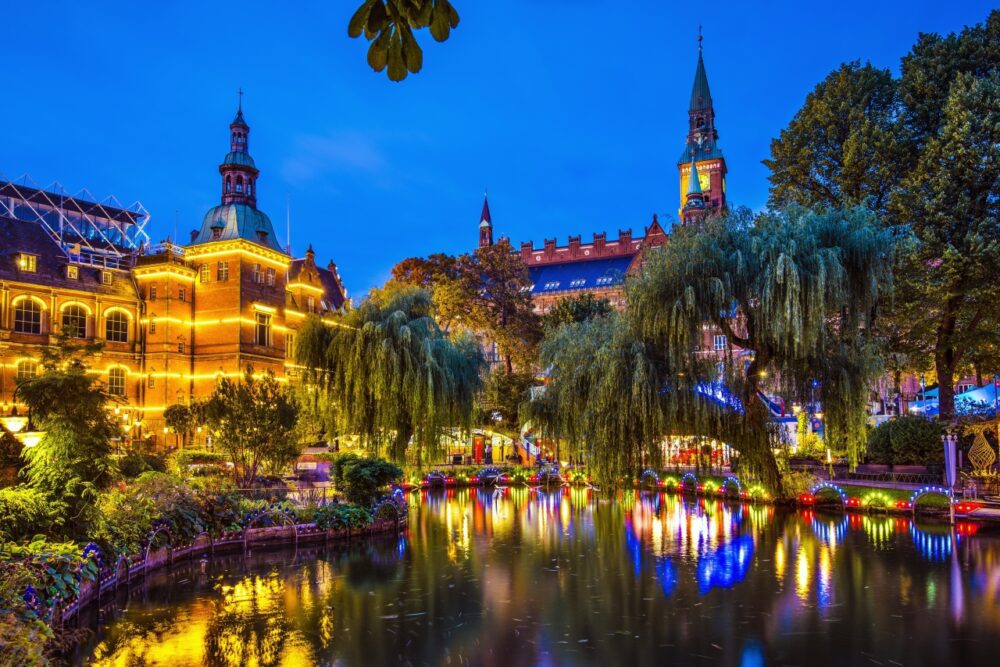
Tivoli Gardens is not just an amusement park—it’s an enchanting experience that feels like stepping into a different era. Opened in 1843, Tivoli inspired Walt Disney when creating Disneyland, and its mix of vintage rides, beautifully landscaped gardens, and romantic lights at night make it a must-visit attraction.
I visited in the evening, and as the lights twinkled around me, I understood why Tivoli is so special. I rode a wooden roller coaster from 1914, watched a live performance in the open-air theatre, and ended the night with a drink by the illuminated lake. Even if you don’t like amusement parks, Tivoli’s charm is impossible to resist.
8. A City Surrounded by Water with Scenic Canals
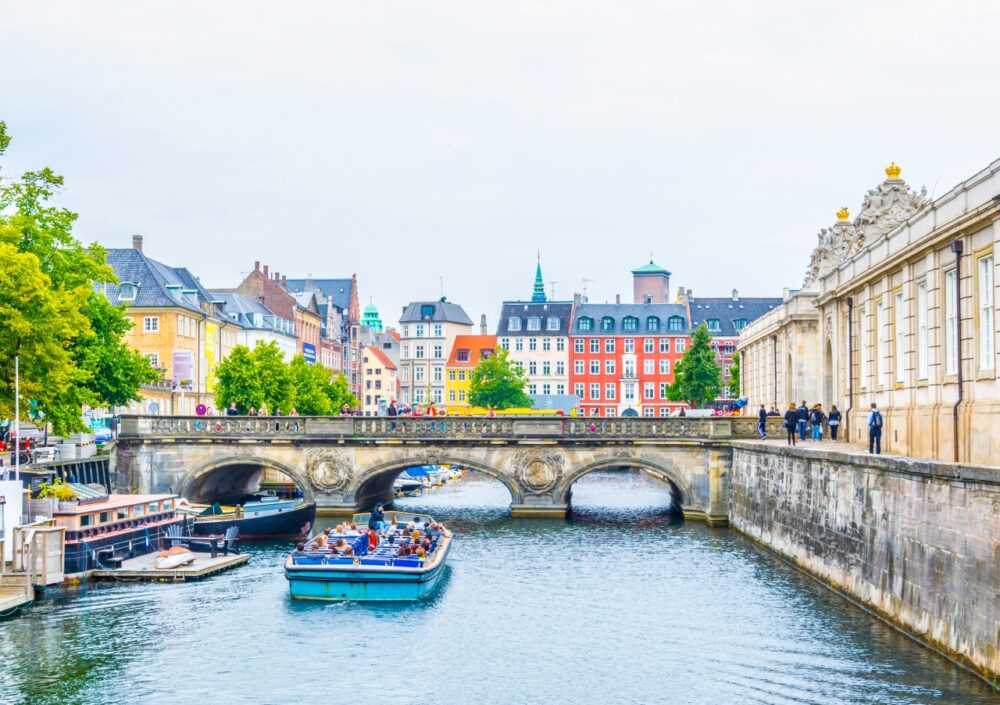
Copenhagen’s location on the water makes it one of the most scenic cities in Europe, with canals and harbours adding to its charm. One of the best ways to experience the city is by taking a boat tour, which passes by famous landmarks like The Little Mermaid statue, the futuristic Black Diamond library, and the hip, canal-side district of Christianshavn.
I took a boat tour from Nyhavn, and it was the perfect way to see the city from a different perspective. The peaceful glide through the canals, combined with the mix of historic and modern architecture, made for a relaxing and visually stunning experience. If you enjoy cities with a strong connection to the water, Copenhagen is full of beautiful waterfront spaces.
9. Friendly and English-Speaking Locals
Danish people are known for being friendly, helpful, and welcoming, and nearly everyone speaks excellent English. Whether you need directions, recommendations, or just a casual chat, you’ll find that locals are approachable and happy to help.
I had a great conversation with a shop owner in Vesterbro who not only gave me tips on the best bakeries in town but also recommended a hidden rooftop bar with stunning views. The ease of communication made my trip stress-free, and I always felt welcome wherever I went.
10. A Perfect Base for Exploring Denmark and Beyond
Copenhagen is well-connected to the rest of Denmark and even southern Sweden, making it an excellent base for day trips. The picturesque town of Roskilde, home to the Viking Ship Museum, is just a short train ride away, while the stunning cliffs of Møns Klint and the charming city of Malmö, Sweden, are also easy to reach.
I took a quick trip to Helsingør to visit Kronborg Castle, the real-life setting of Hamlet, and the journey was as enjoyable as the destination itself. If you love taking day trips and exploring beyond the city, Copenhagen’s excellent transport connections make it easy to see more of Scandinavia.
Cons – Things You Should Consider When Visiting Copenhagen
1. Copenhagen is One of the Most Expensive Cities in Europe
While Copenhagen offers a high quality of life and a fantastic travel experience, it comes at a steep price. Accommodation, dining, transportation, and even simple things like coffee and snacks are noticeably more expensive than in many other European cities. Hotels, even budget options, tend to be pricey, and eating out at restaurants can quickly add up, especially if you opt for anything beyond casual street food.
I realized how expensive the city was the moment I ordered a simple coffee and a pastry and ended up paying what I would usually spend on a full meal elsewhere. Even supermarket prices were higher than expected, making self-catering less of a budget-saving option than in other cities. While it’s possible to find ways to save money—like eating at food markets or using the city’s bike-sharing system—Copenhagen is not a destination for budget travellers unless you plan carefully.
2. The Weather is Often Unpredictable and Can Be Gray and Windy
Copenhagen’s weather is one of its biggest downsides, especially if you’re visiting outside of the summer months. The city experiences long, cold winters with short daylight hours, frequent rain, and strong winds coming off the water. Even during the summer, sudden rain showers and grey skies can appear without warning, making it difficult to plan outdoor activities.
I visited in early spring, hoping for pleasant weather, but I was met with chilly temperatures, a persistent drizzle, and a wind that made walking along the harbour feel much colder than the thermometer suggested. Even locals joked about how quickly the weather could change, and I found myself constantly checking the forecast before heading out. If you’re visiting Copenhagen, packing layers, a waterproof jacket, and an umbrella is essential, no matter the season.
3. Dining Out Can Be Difficult Without a Reservation
Copenhagen has an incredible food scene, but getting into some of the best restaurants can be a challenge, especially if you don’t book in advance. Popular spots, from fine-dining establishments to trendy casual eateries, often require reservations days or even weeks ahead, particularly on weekends. Many places also have limited seating, which adds to the difficulty of securing a last-minute table.
I learned this the hard way when I tried to get dinner at a well-reviewed restaurant in the city centre, only to be turned away because they were fully booked for the entire evening. Even smaller cafés and brunch spots often had long wait times. While there are plenty of great places to eat, planning your meals in advance is essential if you want to experience Copenhagen’s best dining without frustration.
4. The City Can Feel Quiet and Expensive at Night
Despite being a capital city, Copenhagen’s nightlife is relatively subdued compared to places like Berlin, Amsterdam, or even Stockholm. Many bars and restaurants close earlier than expected, especially on weekdays, and while there are clubs and live music venues, the scene isn’t as wild or diverse as in other European cities. Additionally, alcohol is expensive, which means a night out can quickly become costly.
I went out for drinks one evening in the trendy Meatpacking District, and while the bars were stylish and atmospheric, they weren’t as lively as I expected. The high drink prices also meant that many people were drinking slowly, making the atmosphere feel more relaxed rather than energetic. If you’re looking for a city with an all-night party scene, Copenhagen might not be the best fit.
5. Biking is Amazing, But Traffic Can Be Intimidating for Beginners
Copenhagen’s cycling culture is one of its biggest highlights, but for visitors who aren’t used to biking in a city, it can be intimidating. Locals cycle fast, follow strict cycling rules, and expect riders to keep up with the flow of traffic. If you’re not familiar with urban biking, navigating Copenhagen’s bike lanes can feel overwhelming, especially during rush hours when the streets are packed with cyclists.
I rented a bike to get around, but within minutes, I realized that I was slowing down the more experienced riders behind me. The dedicated bike lanes were great, but I had to be extra careful at intersections and roundabouts, where cyclists moved swiftly and efficiently. While biking in Copenhagen is a fantastic way to explore the city, first-timers should familiarize themselves with the local cycling rules before jumping in.
When to Visit Copenhagen
The best times to visit Copenhagen are late spring (May to June) and early autumn (September) when the weather is mild, the days are long, and the city’s parks and waterfronts are full of life. In these shoulder seasons, you’ll also find fewer tourists than in the high-summer months. Summer (July and August) is peak season, with warm weather and a full calendar of events like Roskilde Festival and Copenhagen Jazz Festival, though hotels and attractions can be busier and more expensive. Winter brings a cosy, festive atmosphere, particularly in December when Copenhagen’s Christmas markets and decorated streets make for an idyllic holiday experience.
How to Get to Copenhagen
Copenhagen Airport (CPH), located just 8 kilometres south of the city centre, is Denmark’s main international gateway, with connections from airlines like SAS, Lufthansa, and easyJet. The airport is well connected to the city by the Copenhagen Metro, with trains reaching the city centre in under 15 minutes. Alternatively, regional trains and buses are also available from the airport. Copenhagen is well connected by train to cities like Malmo, Hamburg, and Berlin, making it accessible by rail from other parts of Europe. For those coming from Sweden, Oresund Bridge provides a scenic, direct link between Malmo and Copenhagen.
Where to Stay in Copenhagen
Copenhagen’s neighbourhoods each have a unique vibe, catering to all travel styles and budgets:
- Luxury: Indre By (City Centre) – The heart of Copenhagen, near attractions like Nyhavn and Strøget. For luxury, try Hotel D’Angleterre or Nobis Hotel Copenhagen—both offering high-end comfort in stylish surroundings.
- Mid-range: Vesterbro – A trendy, lively area known for its cafes, bars, and boutiques, just a short walk from Tivoli Gardens. Check out Hotel Ottilia and Absalon Hotel for great design and comfort at reasonable prices.
- Budget: Nørrebro – This multicultural, bohemian neighbourhood is full of character, with great food and nightlife. Urban House Copenhagen and Sleep in Heaven Hostel offer budget-friendly options in a vibrant part of town.
Getting Around Copenhagen
Copenhagen is one of the world’s most bike-friendly cities, and cycling is often the quickest and most scenic way to get around. The city’s Bycyklen bike-sharing scheme is easy to use, with docking stations all over the city. For public transport, the Copenhagen Metro and S-train system cover most areas of interest, and you can use the same tickets across trains, buses, and the metro. For savings, consider buying a Copenhagen Card, which includes unlimited public transport and entry to many attractions. Walking is also a pleasure, particularly along the canals and in neighbourhoods like Nyhavn and Indre By.
How Long to Spend in Copenhagen
Three to four days is ideal for seeing Copenhagen’s main sights, including Tivoli Gardens, The Little Mermaid, and Christiansborg Palace, while enjoying the city’s renowned food and design scene. With an extra day, you could explore neighbourhoods like Nørrebro and Frederiksberg, or take a day trip to Roskilde or the Louisiana Museum of Modern Art. Copenhagen also offers easy access to Sweden, so if time allows, a day trip to Malmo across the Oresund Bridge provides a unique opportunity to experience another country in just a short train ride.
Conclusion
So, is Copenhagen worth visiting? Absolutely! With its charming canals, iconic landmarks, and forward-thinking vibe, Copenhagen is a city that offers unforgettable experiences. While it can be pricey, the quality of life, stunning design, and warm hospitality make it worth every penny. Whether you’re cycling through its cobblestone streets or sampling world-class cuisine, Copenhagen will leave you inspired and longing to return. If you’re ready to experience the best of Denmark, start planning your trip to Copenhagen today!
